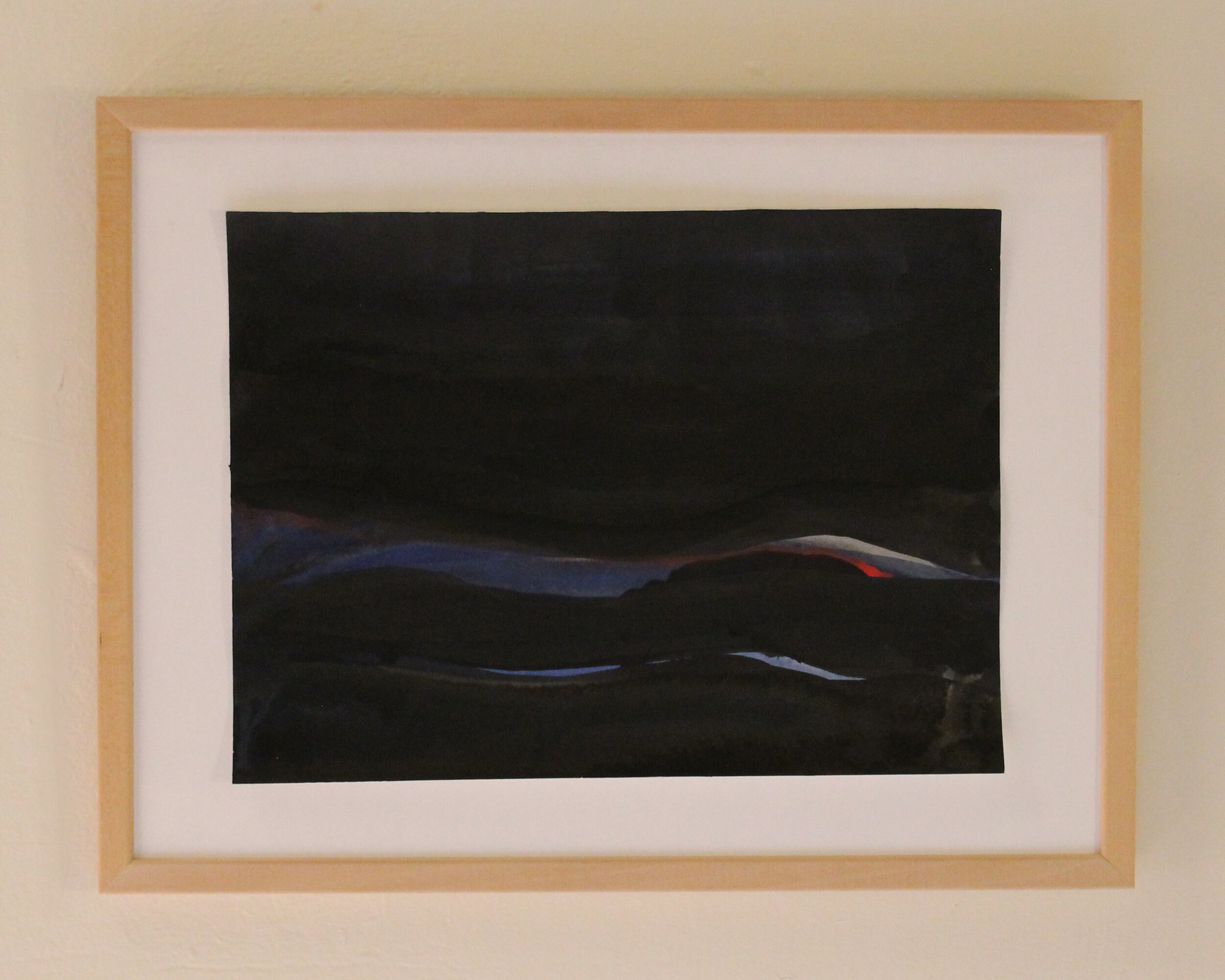BBR Test
By AB; BBR; and Christophe Kihm
On September 22, 2020, The Kitchen published a Video Viewing Room featuring a performance recording of Beau Bree Rhee’s work Performance Paysage alongside a new artist’s text and images. This presentation was, in part, an act of reflection—a looking back on and a re-processing of a performance from the recent past. Through the prism of the trying and tumultuous months between when the performance took place in March and when the recording was released online in September, Performance Paysage took on a dual resonance as both a foreshadowing of our present moment and a document of a previous form of performance in shared physical space. The content of the work underscores this duality: through its movement and poetry, this performance meditates on what it means to be human living in the Anthropocene even as it probes societal and ecological patterns dating back to ancient times.
With the aim of further animating Performance Passage’s multilayered temporality, Rhee envisioned a second element that would complement the Video Viewing Room—a post-script that is also a beginning in its own right. We began to discuss how it might be possible to explore the work’s relationship to our current moment with an eye toward the unfolding uncertainties of the near future. As Rhee and I spoke about the ways that she has continued her studio practice throughout this period, it became clear that the way forward was also a looping back onto the many threads of Rhee’s body of work that run through and beyond this one performance.
The images and words aggregated on this page give a glimpse into Rhee’s ongoing exploration of themes that are present in Performance Paysage. Recurring throughout is a mapping of how the human figure, the body, intersects with or positions itself within landscapes and orbits, both earthly and celestial. This act of charting what Rhee calls “body-space” takes shape in many forms in her work—drawing, poetry, choreography—and often involves collaboration with other practitioners. In the face of current limitations on in-person gathering or movement, Rhee has taken up other modes for collaborating, including by making a garden plot an active site for working in and with natural elements and by initiating exchanges via post with local and distant interlocutors.
As a culmination that also starts anew, this piece is published on the winter solstice, marking the end of the astronomical season that began on the fall equinox (the publication date of Rhee’s Video Viewing Room) and the beginning of the next phase of the celestial orbit.
—AB
I have this image, or I keep imagining a very long hallway, narrow and dim, with art hung at the very end. Lithic landscapes, inconsolably deep submersion, light and atmosphere - they dance through this art, or perhaps it is a window… looking out onto this dancing land. Inside, a stillness, receding into shadows.
— BBR
I turn to landscape, to geography,
to monolith, to volcano
to earthquake, to canyon
to make form of these
shifting layers upon layers of life
infinitely dense
of land of soil of memory
of bloom of decay of touch
of tears of abundance of loss
of joy of sorrow of torment
of toil of dreams of hunger
The time known by a humble seed, edified
the geologic
the lithic
strata
sediment
each year an infinitesimal millimeter
spread upon the grandeur of the
humming youthful earth groaning
Oh groaning time muffled by haste
Let my fingers linger & trace the
arborescence of each day
each hour each moon
The time known by a humble seed
a monument to love
23 march 2020
— BBR
Orientation precedes movement. To orient oneself is to direct a movement, without necessarily having to correspond to a destination. In ethology, the distinction that is established between orientation and navigation highlights the absence of a precondition for orientation, while navigation strictly depends on the choice of a goal. We could consider, therefore, that orientation is not the contrary to getting lost. Perhaps, even, the actions of getting lost and finding one’s way are both folded into the act of orientation.
In one of the numerous ramifications he dedicated to his Umwelt theory, the biologist Jakob Von Uexküll affirms that “the animals cut out the vital circle which suits them in the same way that we cut out figures on a sheet of paper.”
Like a tailor, the organism measures-to-order a pattern cut from the fabric of the world, which is always adjusted to itself.
A body is defined by its powers and what might affect it, through the actions and relationships that it composes with its environment. The unity of a living being is not found necessarily within the organism itself nor is it hidden within its nervous system. Rather, this unity is affirmed in the way a living being performs relationships of meaning by interacting with those near and far.
The body transports its own system of coordinates which privileges its orientation. Shifted by its own movements, this system can replay its dimensions in new significations and new performances, which augment the boundaries directed by the organism in its surroundings and extend its Umwelt. The plasticity of these relations also belongs in the realm of orientation.
—Christophe Kihm







